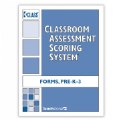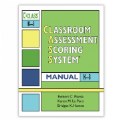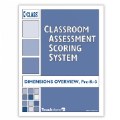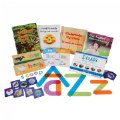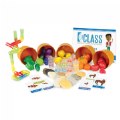CLASS® Dimensions Guide - PreK
Ideal for sharing with pre-K educators new to the CLASS®! Provides an overview of the teacher-child interactions that form the popular classroom observation tool. Describes each of the 10 teacher-child interactions (or "dimensions") that make up the CLASS® assessment, explaining it's importance for children's social-emotional and academic growth. Provides practical strategies and tips to help teachers improve the effectiveness of their teaching across each of the CLASS® dimensions. Available in English or Spanish.
CLASS® PreK
The accurate, reliable way to assess teacher–child interactions
For programs serving children from ages 3–5
With this PreK version of the widely used Classroom Assessment Scoring System® (CLASS®) tool, your early childhood program will have an accurate, reliable way to assess classrooms. The CLASS® PreK tool assesses teacher–child interactions, a primary ingredient of early educational experiences that prepare children for future school success.
This reliable and valid tool:
- Assesses three key domains of teacher–student interaction: Emotional Support, Classroom Organization, and Instructional Support
- Provides developmentally appropriate descriptions of what effective interactions look like in PreK classrooms
- Establishes an accurate picture of classroom interactions through brief, repeated observation and scoring cycles
- Highlights areas of strength and areas for growth useful for guiding improvement efforts
- Provides important information related to your program’s most urgent needs: accountability, professional development, and research
The CLASS® PreK Dimensions
The CLASS® PreK tool measures 10 critical dimensions that fall under three domains. You can get a reader-friendly overview and teaching tips for each domain in the CLASS® PreK Dimensions Guide, available in English or Spanish.
Emotional support
- Positive climate
- Negative climate
- Teacher sensitivity
- Regard for student perspectives
Classroom organization
- Behavior management
- Productivity
- Instructional Learning Formats
Instructional Supports
- Instructional supports
- Concept development
- Quality of feedback
- Language modeling




